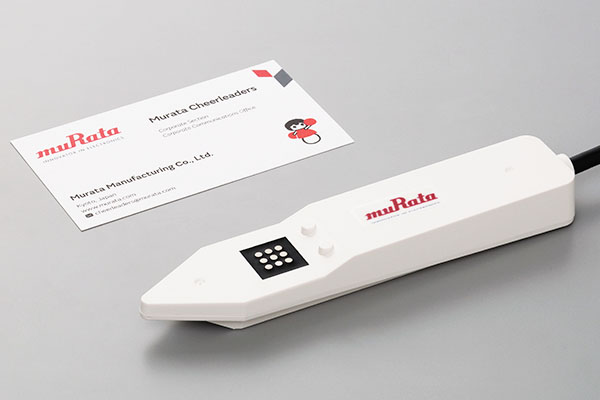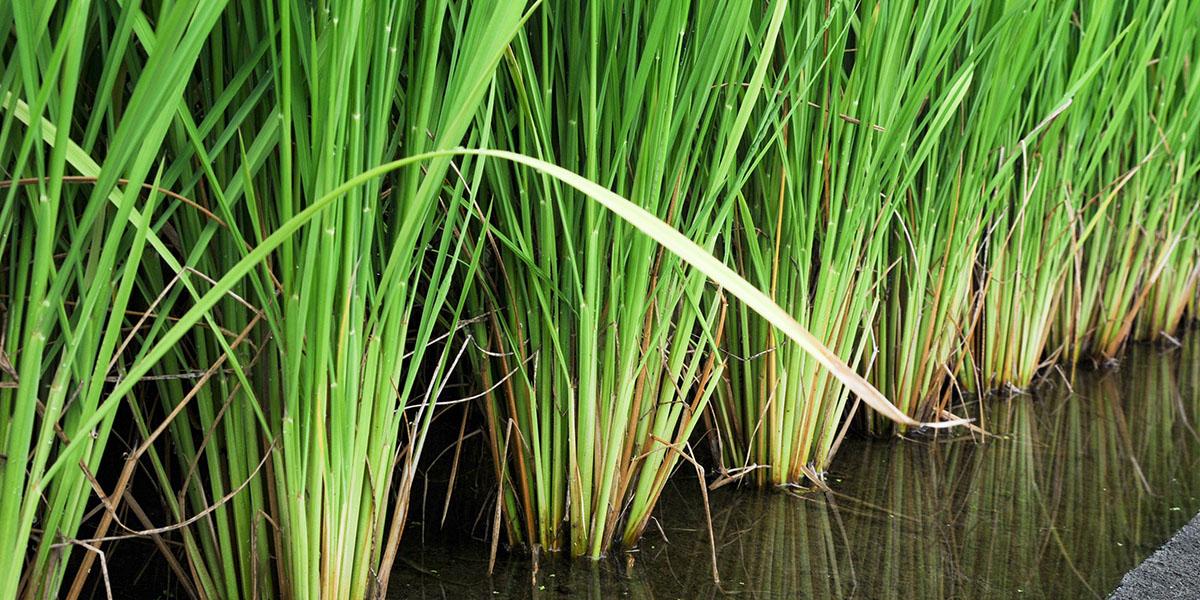Soil sensor


Climate change due to global warming is causing a rise in temperatures and sea levels. The amount of damage from droughts and heavy rains is increasing in various places on the planet. That is having a massive effect on the growth of agricultural produce throughout the world. Varieties of agricultural produce that can withstand climate change have become necessary across the globe to deal with this situation.
Against this background, Tohoku University and the National Agriculture and Food Research Organization have developed a rice plant resistant to salt damage. Salt damage is caused by a high concentration of salt contained in the soil and water, which leads to growth defects. Tohoku University and Murata Manufacturing are jointly conducting the Demonstration Experiment to Analyze the Factors Behind Salt Damage Resistance in the Soil Surface Rooting Rice Strain using soil sensors from June 2022 to March 2023. The aim of this experiment is to analyze the factors behind the salt damage resistance in that rice plant. How can sensing technologies contribute to the selective breeding of agricultural produce? We spoke with Eiko Hanzawa, a technical expert at Tohoku University involved in research, about an overview of rice plants with salt damage resistance and the utilization of sensing technologies.
--What kind of research do you conduct in the study of genetics and breeding, which is your specialty?
Genetics and breeding is a research field in which we create new never-before-seen plant varieties. We do that through techniques such as by analyzing the genetic factors that control the useful traits possessed by plants and then introducing the genetic factors relating to the desired traits. The useful traits are, for example, the properties that determine the shape of the plant or make it possible to adapt to various environments. Genome editing and other areas have been attracting attention recently when it comes to selective breeding. However, we create new strains with genetic techniques that combine cross-breeding between strains and genetic analysis.
--It was announced that you had developed a rice plant resistant to salt damage through genetic breeding techniques in 2020. How is that variety different from conventional rice plants?
Tohoku University and the National Agriculture and Food Research Organization conducted joint research on rice strain resistant to salt damage, which was announced in 2020. They discovered for the first time in the world the rice plant gene that forms soil surface roots (Photo 1) by the roots spreading out laterally at or near the ground surface. We used a strain for which we had introduced that gene into a rice plant cultivar to perform an evaluation in cultivated fields (a place where agricultural produce is grown) managed by us for the salt damage experiment. At that time, in fact, the yield (the amount of agricultural produce harvested) of regular rice plants decreased due to salt damage. However, we obtained data to the effect that the yield did not decrease for rice plants whose roots spread out laterally to the extent of regular rice plants.
--Why are rice plants less susceptible to the effects from salt damage when their roots spread out laterally?
To put it briefly, the effects from salt damage differ slightly between regular fields and paddy fields. A high concentration of salt in the soil itself damages plant cells for salt damage in regular fields. On the other hand, the compactness of the soil increases due to excess sodium ions derived from the salt for salt damage in paddy fields. That means oxygen is less likely to become trapped between the soil. Therefore, the soil enters a state of oxygen deficiency. It is thought that this causes poor growth in agricultural produce such as root rot.

--There is a method of desalinization as a means of protecting agricultural produce from salt damage. However, what are the advantages to adopting a selectively bred rice plant?
I think that large-scale salt damage occurring in Japan will be temporary cases like after the Great East Japan Earthquake. Accordingly, it may be quicker to perform desalination work by spraying fresh water from the top of paddy fields to flush the salt underground. Nevertheless, it has been reported that salt damage will occur in many countries and regions around the world caused by climate change due to global warming in the future.
Looking at the situation globally, there is not just salt damage in arid regions where the salt in underground water rises up to the ground surface when it does not rain; there is also, for instance, salt damage in coastal regions caused by seawater flowing into agricultural land due to rising sea levels. That means it will also be necessary to prepare for such large-scale and long-term challenges. Assuming that such situations arise, it will not be possible to keep up with those challenges by performing desalinization work. Therefore, we believe that planting varieties of plants resistant to salt damage from the beginning will be a more effective method.
--What have you been investigating in the Demonstration Experiment to Analyze the Factors Behind Salt Damage Resistance in the Soil Surface Rooting Rice Strain being conducted jointly by Tohoku University and Murata Manufacturing from June 2022 to March 2023?
We came to want to know what kind of relationship there is between the direction and depth of root growth and the salinity of soil after developing the rice plant resistant to salt damage in 2020. Accordingly, we will investigate how the salinity changes in the ground surface, the middle layer, and also the deepest layer of the soil in this demonstration experiment (Photo 2).
We hope to obtain new knowledge about how the salinity of soil changes over time and how salt affects the roots.

--Soil sensors have also become necessary to understand the differences in the changes in the salinity due to the depth of the soil, haven’t they?
I came up with the idea that it may be possible to monitor in real time the changes and differences in salinity depending on the depth of the soil as well as the effect from the natural environment when I first learned of the existence of soil sensors.
I learned about the existence of soil sensors upon talking with Assistant Professor Hitoshi Kanno of Tohoku University (at that time). I was asking him whether it would be possible to measure the salinity of the saline water more efficiently in the saline paddy field I had been managing over many years at the Experimental Farm Station (Kashimadai, Osaki, Miyagi Prefecture) attached to the Graduate School of Life Sciences, Tohoku University to which I belonged around 2019. At that time, we were borrowing sensor devices and then using them to continuously monitor the salinity.
The paddy field workers collected saline water once a day and measured it with a salinity meter. They then adjusted the concentration by adding irrigation water and other types of water to manage the salinity in the salt damage experiment cultivated fields. The salinity can fluctuate greatly in a day due to changes in the weather such as rainfall and rising temperatures. However, we were not able to see the trends of those changes in real time.
--The results from this demonstration experiment are likely to have great significance in the future, aren’t they?
I believe data collection and analysis technologies that utilize the latest equipment like these sensors will be very important to create an era in which we humans live in coexistence with nature while enjoying its blessings to the maximum at the same time as minimizing the occurrence of disasters by further deepening our understanding of the natural environment.
--What kind of role do you feel soil sensors and other environmental sensors will play in the agricultural sector in the future?
Agricultural sites exist together with the natural environment. Therefore, I think it will be increasingly important to proactively incorporate technologies like this in the future to correctly evaluate and visualize the environment surrounding agriculture. Moreover, I believe that using various sensors will also have a positive effect on increasing the number of young farmers in addition to leading to labor saving and efficiencies in agriculture. Accordingly, I think this technology has the potential to be able to fully contribute to securing even more sustainable and stable yields.
Nevertheless, I also feel that humans are not yet fully utilizing machines and data to the extent that they lead to good results at the present time. Therefore, I think it would be great if technologies were developed that can acquire detailed data relating to yields and quality or for there to be an increase in technologies that can be operated more easily. In addition, I think keeping down costs and securing personnel, such as through equipment introduction and maintenance management, are major issues.
--Are there any challenges with utilizing sensors?
I consider a base of experience, knowledge, and technologies in agriculture cultivated over many years to be a prerequisite for utilizing sensors. Together with the development of such new technologies, if the link with conventional methods, that is, the combining of data, is not done well, there is a possibility that technologies alone will advance forward. Various things must be taken into consideration in this area.
--It feels like there is a general image that people involved in agriculture are not good with IT. That serves as the reason why the adoption of IT in agriculture has not progressed to the extent that it has in other industrial sectors. Under such circumstances, what kind of initiatives will be necessary to proactively promote the utilization of IT in the agricultural sector in the future?
I believe it would be good if there was an increase in the number of opportunities for farmers to easily come into contact with IT technologies. For example, I think it would be effective to implement initiatives such as those that make it possible to trial devices for free for a certain period of time. I was fortunate to encounter soil sensors from my connections with professors. Realizing the advantages of IT technologies utilized in monitoring led to this current demonstration experiment.
I feel we need to strengthen data utilization in the future such as in terms of how to interpret data acquired by sensors and other devices and how to improve agriculture processes using that data. To achieve that, I first think it is important to increase the number of opportunities for farmers to come into contact with IT technologies in person to allow them to experience the advantages of utilizing those IT technologies.
--There is an impression that interdisciplinary interaction between agriculture and other sectors seems to be difficult because the fields in which those people work are different. What kind of environment do you think should be prepared as opportunities for such interaction?
I think it is important to utilize research meetings, academic conferences, and other events held regularly in each research sector to increase the number of occasions for researchers in different sectors to be able to interact. In addition, I also believe it would be valuable to establish the environment, disseminate information, and implement other efforts to be able to match the on-site needs of agriculture with IT technologies. I would then expect those respective technologies to develop into new industries beyond sector boundaries.

Eiko Hanzawa
A technical expert in the Graduate School of Life Sciences, Tohoku University. Graduated from the Department of Bioengineering, Faculty of Engineering (then) at SOKA University and then completed a master’s course in the Department of Agriculture, Graduate School of Science and Technology, Shinshu University. Engaged as a technical staff at the Graduate School of Life Sciences, Tohoku University, from 2002 and is now working as a technical expert there. Has conducted genetic breeding research involved in the form of rice plant roots for over 10 years while providing technical support relating to research and education activities.